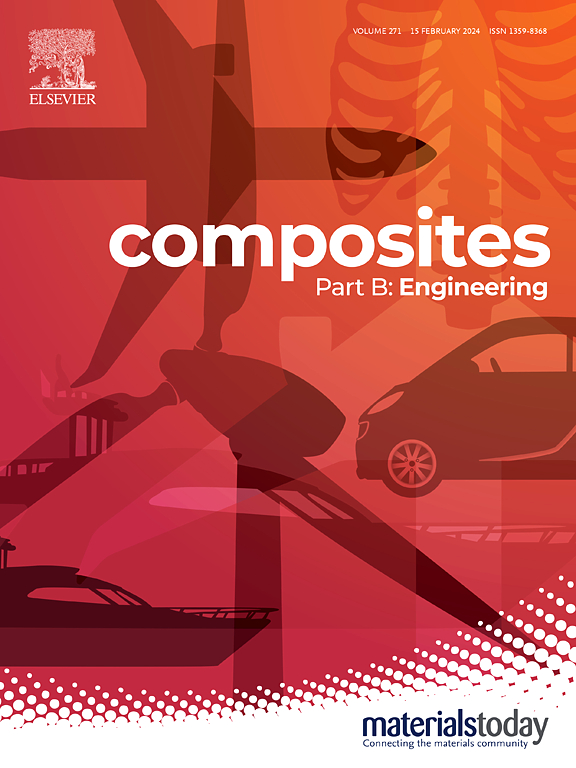Real-time process monitoring and prediction of flow-front in resin transfer molding using electromechanical behavior and generative adversarial network
IF 12.7
1区 材料科学
Q1 ENGINEERING, MULTIDISCIPLINARY
引用次数: 0
Abstract
Lightweight materials have been utilized for several decades, offering advantages in industries such as aerospace, automotive, and wind turbine manufacturing. Among these, fiber-reinforced plastics are widely utilized owing to their excellent mechanical properties. Resin transfer molding—a method for manufacturing thermoset composites—is susceptible to dry spots, which degrade the mechanical properties. Accurately identifying and predicting the flow front can enhance process robustness, ensuring defect-free composites. This study presents a novel approach for identifying flow fronts in real time and predicting flow-front scenarios using a tree model and a generative adversarial network (GAN). First, the changes in electrical resistance during infusion were investigated by examining the electromechanical behavior. Subsequently, by leveraging the electrical resistance data, linear equations were formulated to identify the locations of flow fronts between the electrodes. Finally, possible flow-front configurations were identified across three sections, encompassing 17 scenarios, using the developed identification model. Flow-front prediction was conducted using the tree model, which evaluated all 17 scenarios and tracked the most relevant scenarios according to probability. Additionally, the GAN generated more realistic flow-front configurations, enhancing both the identification and prediction of the flow. This model can reflect the racetracking effect without considering the permeability of the fiber preform, significantly reducing the computational cost compared with numerical simulations. Moreover, the flow-front prediction model effectively mirrored the experimental results, outperforming numerical simulations in both adaptability and speed. By utilizing this model, operators can identify defects such as dry spots in real time and predict their locations using the predicted flow-front configuration.

求助全文
约1分钟内获得全文
求助全文
来源期刊

Composites Part B: Engineering
工程技术-材料科学:复合
CiteScore
24.40
自引率
11.50%
发文量
784
审稿时长
21 days
期刊介绍:
Composites Part B: Engineering is a journal that publishes impactful research of high quality on composite materials. This research is supported by fundamental mechanics and materials science and engineering approaches. The targeted research can cover a wide range of length scales, ranging from nano to micro and meso, and even to the full product and structure level. The journal specifically focuses on engineering applications that involve high performance composites. These applications can range from low volume and high cost to high volume and low cost composite development.
The main goal of the journal is to provide a platform for the prompt publication of original and high quality research. The emphasis is on design, development, modeling, validation, and manufacturing of engineering details and concepts. The journal welcomes both basic research papers and proposals for review articles. Authors are encouraged to address challenges across various application areas. These areas include, but are not limited to, aerospace, automotive, and other surface transportation. The journal also covers energy-related applications, with a focus on renewable energy. Other application areas include infrastructure, off-shore and maritime projects, health care technology, and recreational products.
 求助内容:
求助内容: 应助结果提醒方式:
应助结果提醒方式:


